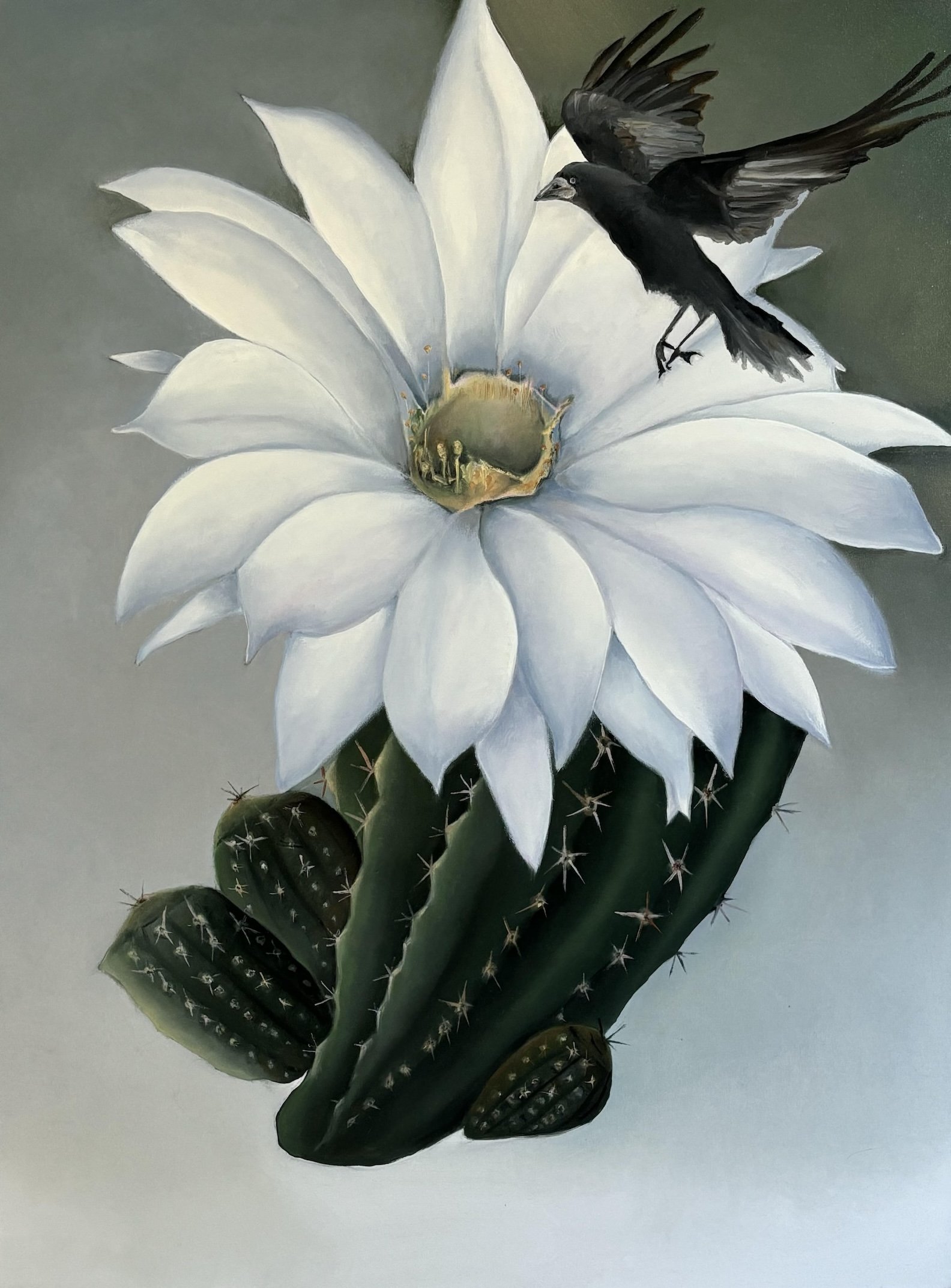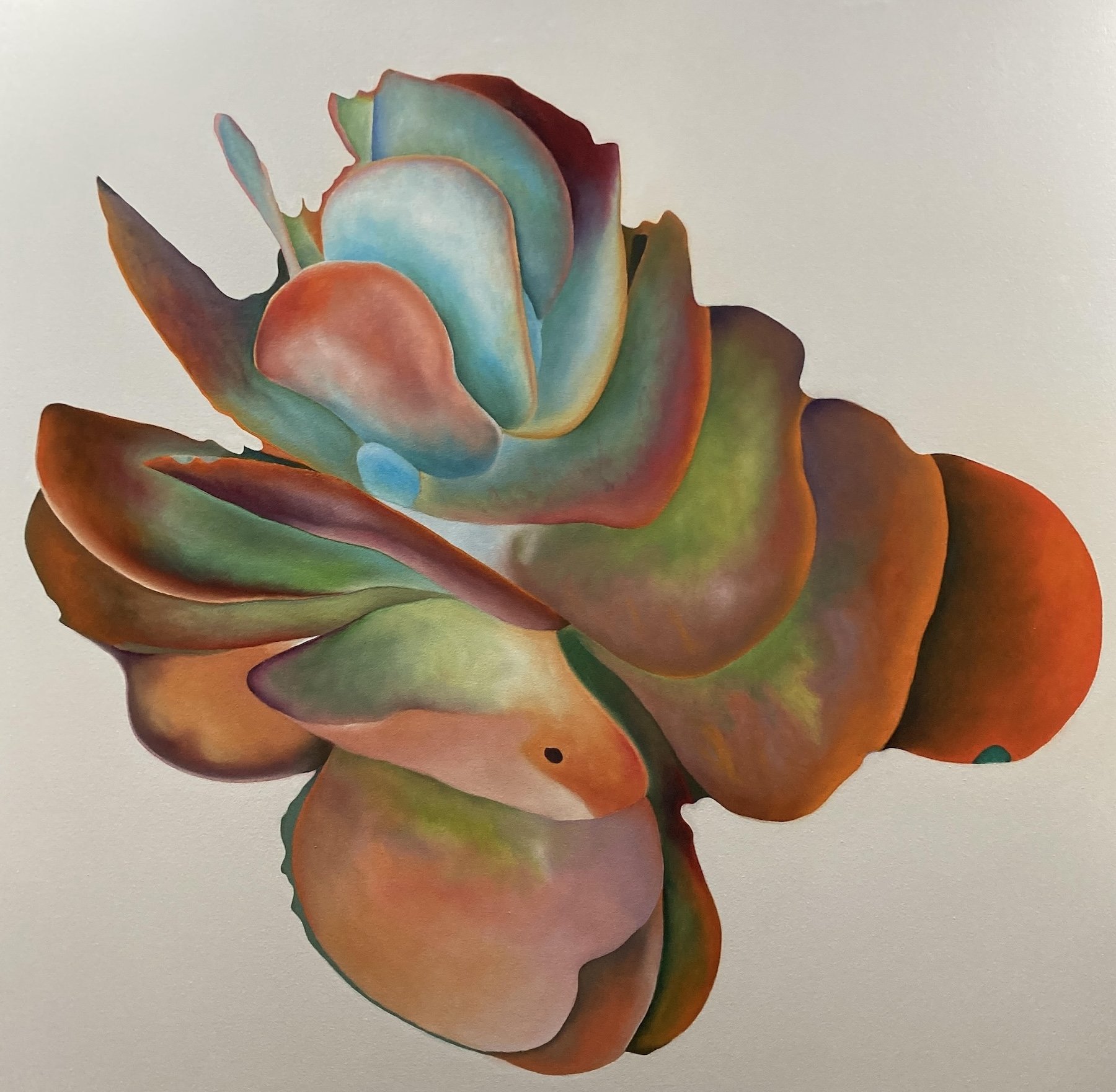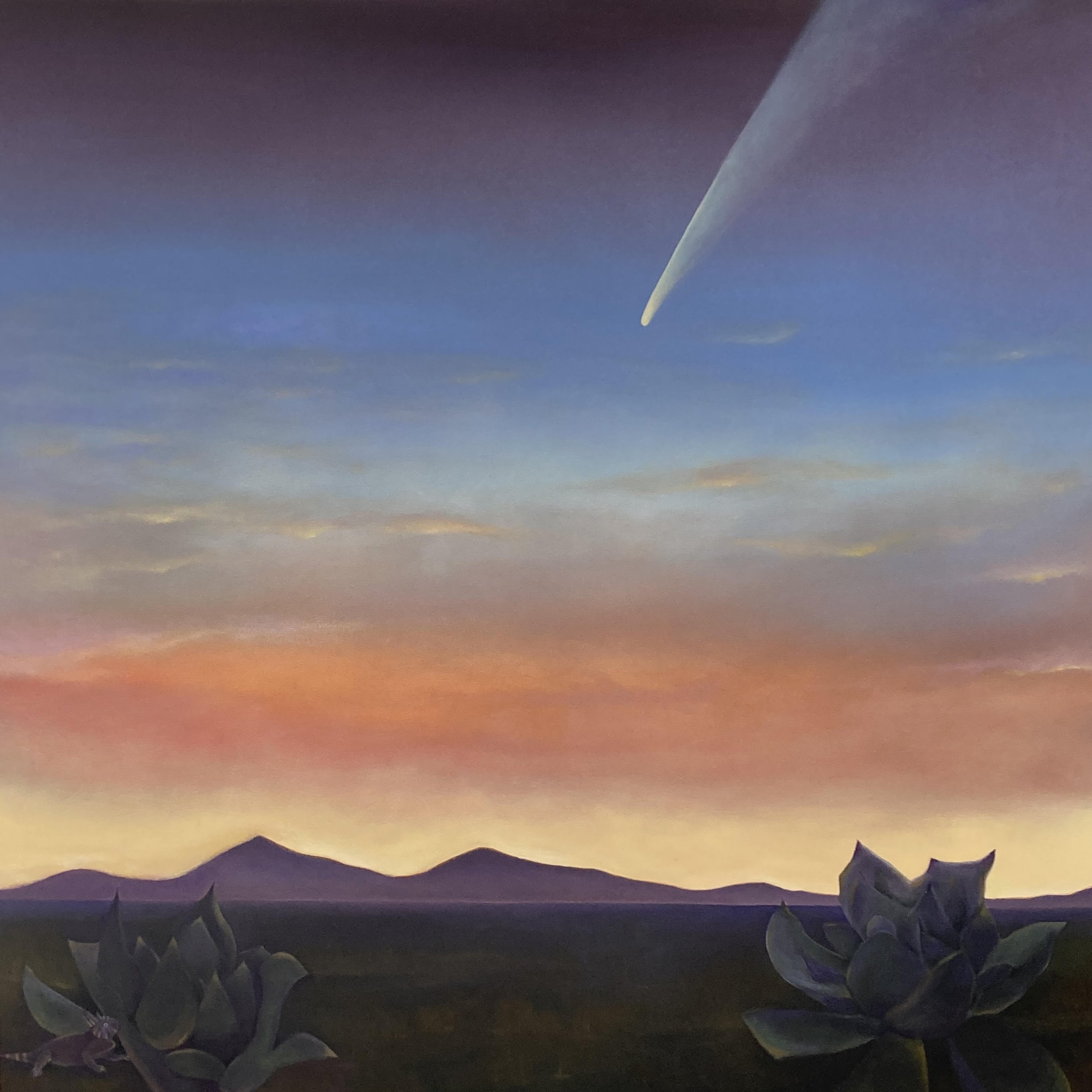Interview with artist Peter Sixbey
Peter Sixbey is a Little Rock artist who spent most of his adult life working in museums as an art conservator. Now retired, most recently from Historic Arkansas Museum, he is able to enjoy painting full time. More of Pete’s work can be found at Justice Fine Art Gallery in Hot Springs, Arkansas and at his Instagram.



AAS: Pete, are you originally from Arkansas?
PS: I was born in Sikeston, Missouri and moved around early on before settling in Magnolia, Arkansas when I was in the 5th grade. I lived in Magnolia from then until after I finished college at Southern Arkansas University with a BA in Sociology and a minor in Art. My father and grandfather were both professors there, so I think that was the path of least resistance at the time. After college, a good friend of mine and now a well-established artist in his own right, Jay Shinn, also from Magnolia, convinced me that I needed to go to the Kansas City Art Institute to study painting. Soon after, we both moved to Kansas City. I decided for different reasons, after moving there, that attending school so soon after receiving a college degree was not for me. But as fate would have it, I was hired at the Nelson - Atkins Museum of Fine Art in Kansas City as an art handler and preparator and eventually moved into the conservation department which led to a 35-year career in museum conservation. I worked in museums and historical societies in the West and Midwest and also started a private conservation business. I retired from the State Historical Museum of Iowa after 20 years and thought I was permanently retired until a job opening came up at Historic Arkansas Museum and since I was looking to get back to my roots in Arkansas, I decided to come out of retirement and work a few more years, get settled in Little Rock and get back to painting after retiring from HAM in 2022.
AAS: When did you discover your love of art? Did you grow up around artists?
PS: I was doodling and chicken-scratching as a child like a lot of kids and continued doodling until now, though hopefully a little more refined and disciplined. Though I must say kids’ art is some of the best - free and uninhibited. My father was probably my first influence - He was a really good cartoonist though he never did it professionally and would paint various subjects - the most memorable was a very good reproduction of Picasso’s Guernica that completely covered a wall in his office at the university. The building it was located in was torn down eventually and I remember seeing that mural in crumbles on the ground, which was very poignant since Guernica is a depiction of war and destruction. It definitely had an impact. As an adult, I love numerous artists and genres. I don't know if I can name a favorite. I was around a lot of art in my professional life and I am positive that it had a huge impact. Working at the Nelson - Atkins Museum was a daily art history lesson in itself. Also, and most importantly, I married an artist, Kathryn Sixbey. She has been a great influence and art critic, in a good way.
AAS: Much of your work depicts the desert Southwest. What is it about that landscape that fascinates you?
PS: The Southwest is a magical place. It's easy to see why so many artists are drawn to the sheer vastness, infinite vistas, varied geography and enhanced bright and varied colors. I remember driving to Jackson Hole, Wyoming when I was working for the Wyoming State Museum, and my mouth dropped open at the first sight of the Grand Tetons, similar to my reactions to the Grand Canyon and many other western places. There is a feeling of not just solitude but that feeling of insignificance when confronted with such huge passages of time. Geological time can be very humbling! There is just so much out there that can be inspirational and the subject for art. That emotional reaction to awe- inspiring landscapes is a good impetus to create. I like the sculptural aspect of the rocks and plant life. Cacti and other succulents have such a unique quality to them as if from another planet especially when you haven't experienced that growing up. It’s also arguably the best area for painting skies. The colors are intense and in some areas such as around Albuquerque, New Mexico, the cloud formations put on quite a spectacular show on a daily basis. Easy to see why Georgia O’Keeffe and others settled in those areas to create.
AAS: I think Haunted Desert is a wonderful example of your dream-like and spiritual interpretation of the desert. Tell me about that painting.
Haunted Desert, 30" x 40", oil on canvas
PS: Thank you! I wanted to do something “spooky”. I like the surreal paintings of Dali or Magritte. So, my goal was to evoke that feeling using the desert as the stage. It's pretty stark and desolate and using the cow skull along with a somewhat garish color palette gives it a nightmarish feeling. For me the cactus is ghostlike- forbidding and foreboding. I was born on Halloween so, I guess this comes honestly! Anyone who has spent much time out in the wilderness has experienced what I would describe as an almost primal fear especially out hiking or camping away from the crowds.
AAS: How would you define your style? Or do you even think you paint in a particular style?
PS: I would call it reactionary- that's my new term. Actually, I love so many different styles that I just react to paintings or a style and I say ok let's try that and see what happens. Along the way you tend to develop some skills that lend themselves to a certain approach or style and so you start leaning more that way, at least that's been my experience. I have been hesitant to just single out one style or genre over another. I'd like to keep it more open. I'm not saying the other way is bad where you just do one particular thing. That is perfectly fine. I guess I'm exploring and maybe always will and whether it lands on one thing only time will tell. The goal is to do a good painting - one that is technically sound - colors, composition etc. are as good as my skill will allow. Hopefully that just keeps getting better! Also, my approach is to do something that really trips my trigger so that I want to make whatever it is look good and am willing to put in a good effort. I think that's important because if you are not vested in the subject emotionally or connected in some way, for me it is hard to do the best work.
AAS: Two Cacti and Crow is certainly one of my favorites. In Native American cultures the crow is a spirit guide and symbolizes new beginnings. What does it represent to you in that painting?
Two Cacti and Crow, 36" x 36", oil on canvas
PS: Thank you! Yes, what is it about crows? My wife and I were in Santa Fe a few years ago and it appeared that this same crow was following us around town and felt like it was our personal tour guide or travel companion or as you state a personal spiritual guide. I like the elusiveness and cleverness of crows. The iconography of crows in Native American culture is so interesting and significant. When I was young, my family had a crow as a pet that my uncle had rescued. So, I think all these things have contributed to my fascination. I like the way Georgia O’Keeffe uses symbols in her paintings many of which are put in out of context or juxtaposed in certain ways that make you think differently about a subject or object than you normally would such as her painting of a ladder floating in the sky: which makes it take on a different meaning than just a ladder propped up against the barn. Sometimes it's just mysterious with no real answer or completely up to the imagination of the viewer.
AAS: When I first looked at Cactus Sentinels I thought of a shrouded family. I love the way your seemingly simple and direct images can garner different interpretations by the viewer.
Cactus Sentinels, 48" x 48", oil on canvas
PS: Yes, I think that there could be several different interpretations. One is I think it could be a family all standing together - a strength in numbers or family unity. It could be as guardians of the desert - a warning to tread lightly or pay the consequences. If you enter, be careful. Or just the opposite- a gateway or welcoming party to a strange beautiful land: A gateway to the desert. I also think the perspective is interesting as the viewer is looking from below and right in your face so to speak. Or it could be just a nice desert scene. It’s fun and interesting to imagine what is going on. - what is the story? Edward Hopper evokes that feeling very well in his paintings and he is another great artist to emulate.
AAS: Succulents are a favorite subject of yours and Four in a Row is a terrific study of form, shading and color.
PS: Yes, we have a pretty good collection of succulents: agave, cathedral plant, kalanchoes which is one of my favorites to paint because they are so colorful and sculptural. We seem to pick up a new one or two every year. Four in a Row was a good study in color and shading. A little Andy Warholish, like his Soup Cans in a way, repeating the same object in different ways. I was trying to use compatible bright colors that would stand on their own but work as a group.
Four in a Row, 20" x 80", oil on canvas
AAS: Green and Yellow on Black is a wonderful abstraction. Do you do many abstract paintings?
Green and Yellow on Black, 40" x 30", oil on canvas
PS: Thank you! I have done some very pure abstracts that are basically worked out as I go - very unscripted or planned but with limited success. I started using succulents as a start for the basic form which are pretty abstract and that seems to work much better for me. The forms are so naturally beautiful- it just lends itself well to what I was trying to achieve. I would love to go back to some other abstracts at some point. I am drawn to Mark Rothko - love his use of color and form and one of my favorite artists is Richard Diebenkorn who uses real life as a start for subject matter but abstracts that so well with incredible color and composition. High goals to shoot for!
AAS: Much of your career has been in museum art conservation and preservation. How did you get started in that field?
PS: Expanding on what I mentioned above, after working at museums and historical societies for a while, I started Sixbey Conservation working with museums and private collectors needing conservation services. One client was the National Park Service- Midwest Region - I was fortunate to get to work on numerous nationally significant sites, including Mt. Rushmore. As part of that job which was basically doing a condition survey of a large historically significant plaster model of a building that never was completed. As a fun bonus, I got to climb very steep stairs to the top of the monument and stand on top of the president’s heads, which was a thrill and amazing lookout. Another interesting job was doing a wooden object and furniture survey of President Lincoln's Historical Home in Springfield, Illinois. I was on the second floor of the home doing a condition report on Abraham Lincoln's miniature desk that is placed on your lap and during that time the Gettysburg Address which could have been written on that particular desk was being narrated over the city's public address speakers as it happened to be the anniversary of 9-11. That was a very surreal experience! Gave me goosebumps! Another project that I worked on over a 5-year time period was the restoration of the large highly ornate and gilt mirrors at the Historic Governor’s Mansion in Des Moines, Iowa. Many of the ornaments were either broken or missing which had to be repaired or completely refabricated. All the mirror frames had been repainted in an ugly bronze paint covering all the original gold leaf. That had to be carefully removed and then after the ornaments were repaired all of the surfaces had to be regilded. It was quite a tedious project but my gilding skills by the end were vastly improved. I have been very fortunate getting to see and experience firsthand many interesting culturally and nationally significant sites and historical objects.
AAS: Tell me more about your work at Historic Arkansas Museum. Were there any especially interesting or challenging projects you worked on?
PS: I was hired as the museum conservator in 2019. One project that I did find interesting was the conservation of a gilt mirror frame that was in the collection. I had the process recorded as I was working on it and described what I was doing as I progressed with its restoration. The video was then shared online with positive feedback. I retired after 2½ years at HAM and now happily painting among other retirement perks.
AAS: Now you are devoting more time to painting. Was it an easy transition to make from the highly technical and high-pressure side of conservation, to creating for your own pleasure?
PS: Over the years while working full time in conservation I did dabble in painting or sculpture and other creative endeavors, but it wasn't enough to improve or get on track in any one of them. Overall, I’d say it has been a fairly easy transition though it certainly has its particular challenges. But I had the hand and eye skills and was adept at using tools and was familiar with many different art materials from my museum work. The challenge for me is thinking creatively and putting to canvas ideas that I've been carrying around mentally. It has been a grand journey and hopefully I can continue to learn and grow, not take myself too seriously, and have fun.





